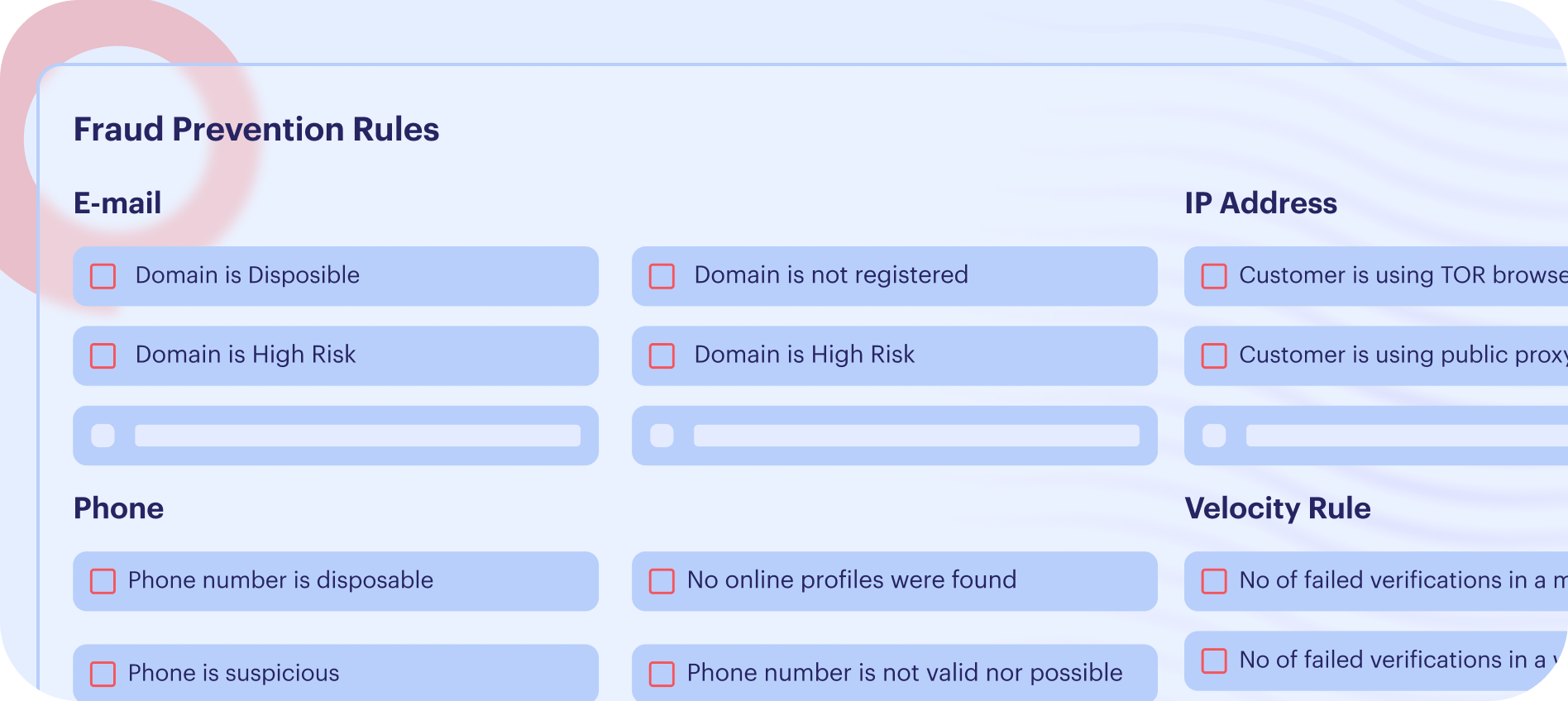Fraud Prevention Rules
Our fraud prevention rules empower merchants to customise parameters aligned with their risk tolerance levels. Triggered by events like user registration, these rules swiftly analyze incoming data. Automated actions, such as flagging transactions for review, ensure proactive protection against evolving threats.
Merchants can conveniently customise and toggle the types of fraud prevention rules they wish to use during creation of Risk Assessment.

Email
Verify the authenticity of a user’s email through predefined checks like:
- Domain is disposable.
- Domain is not registered.
- Domain is custom and was registered less than 1 month ago. No online profiles were found. It was not involved in a data breach.
- Domain is a free provider. No online profiles were found. It was not involved in a data breach.
- Domain is a free provider. The only online platform found is identical to the provider. It was not involved in a data breach.
- Domain is high risk.
- Domain is custom and was registered between 2 and 3 months. No online profiles were found. It was not involved in a data breach.
- Domain’s registrar name is high risk.
- Domain is high risk (Found in fraudulent email list).
Phone
Verify that the user’s provided phone number is authentic through checks like:
- Phone number is disposable.
- Phone number is not valid nor possible.
- No online profiles were found.
- Phone is suspicious.
IP Address
Checks if the user IP Address is changing according to location and other parameters like:
- Customer is using TOR browser.
- Customer is using a Web proxy.
- Customer is using public proxy.
- Customer is using a datacenter ISP.
- There are 2 or more suspicious open ports on the IP address.
- IP address was found on 5 or more spam blocklists.
Velocity Rule
Checks how many times the user has tried the verification process and failed.
- No of failed verifications in a month.
- No of successful verifications in a month.
- No of failed verifications in the last month.
- No of successful verifications in the last month.
- No of failed verifications in a week.
- No of successful verifications in a week.
- No of successful verifications in a day.
- No of failed verifications in a day.